Fabry Disease – Empowering Fabry: Treatment Insights for Thriving Lives- Market Insight, Clinical trial, Product Analysis, Patent Analysis, Competitive Analysis and Market Forecast – 2024-2034
The global Fabry disease treatment market was valued at ~USD 2.4 billion in 2023 and is expected to reach around ~USD 4.6 billion by 2030, growing at a robust CAGR of ~10% from 2024 to 2030.
Fabry disease is a rare genetic disorder characterized by a deficiency of the enzyme alpha-galactosidase A (alpha-GAL), leading to the accumulation of sphingolipids in various tissues and organs. This comprehensive overview aims to provide insights into the different aspects of Fabry disease, including its types, symptoms, diagnosis, and available treatments.
The U.S. Fabry disease treatment market was valued at about USD 500 million in 2023 and is projected to grow to USD 720 million by 2030, reflecting a steady increase in demand for effective treatments and therapies for the disease.
Fabry disease manifests in two main types based on the age of symptom onset:
The symptoms of Fabry disease can vary in severity and presentation, but commonly include:
Diagnosing Fabry disease involves various tests, including:
While there is no cure for Fabry disease, available treatments aim to alleviate symptoms and slow disease progression:
Sangamo Therapeutics gained FDA alignment for accelerated approval pathway of ST-920 in Fabry disease, Biologics License application submission expected in 2025. (October 2024)
Hanmi Pharmaceutical and GC Biopharma received US FDA IND Clearance for Phase 1/2 Trial of LA-GLA, the world’s first once-monthly subcutaneous treatment for Fabry Disease. (Sept 2024)
Sanofi Genzyme and AKF launched an awareness campaign for Fabry disease diagnosis and education. (May 2024)
Centogene and Takeda renewed their partnership to enhance global diagnostics for Fabry disease, boosting market access and patient care. (March 2024)
Fabry disease poses significant challenges due to its multisystemic effects and variable clinical manifestations. However, advancements in treatment options, including enzyme replacement therapy and oral chaperone therapy, offer hope for improved management and quality of life for affected individuals. Continued research endeavors hold promise for further therapeutic innovations in the future.
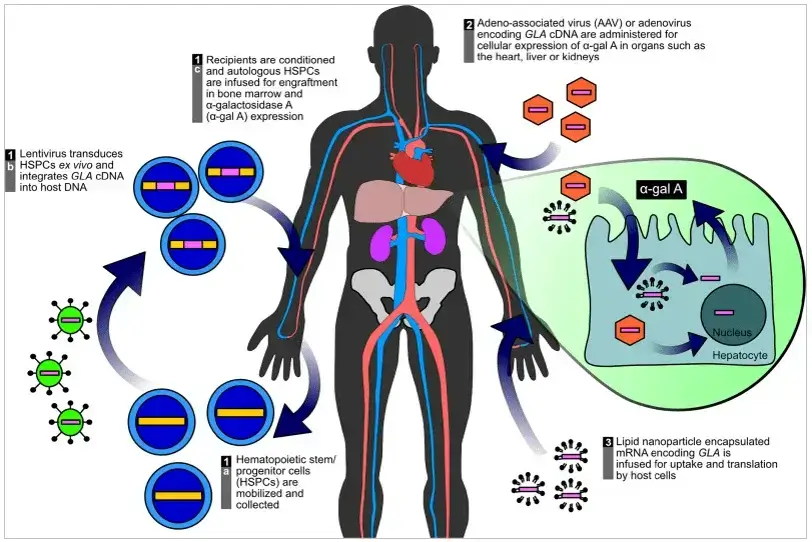
Figure 1: Gene Therapy for Fabry Disease patients
Credits: >>
To sustain competitiveness in the field of Fabry Disease, it’s crucial to grasp the developmental pipeline comprehensively. This involves staying updated on the evolving landscape, competitor strategies, and upcoming advancements in treatments and research.
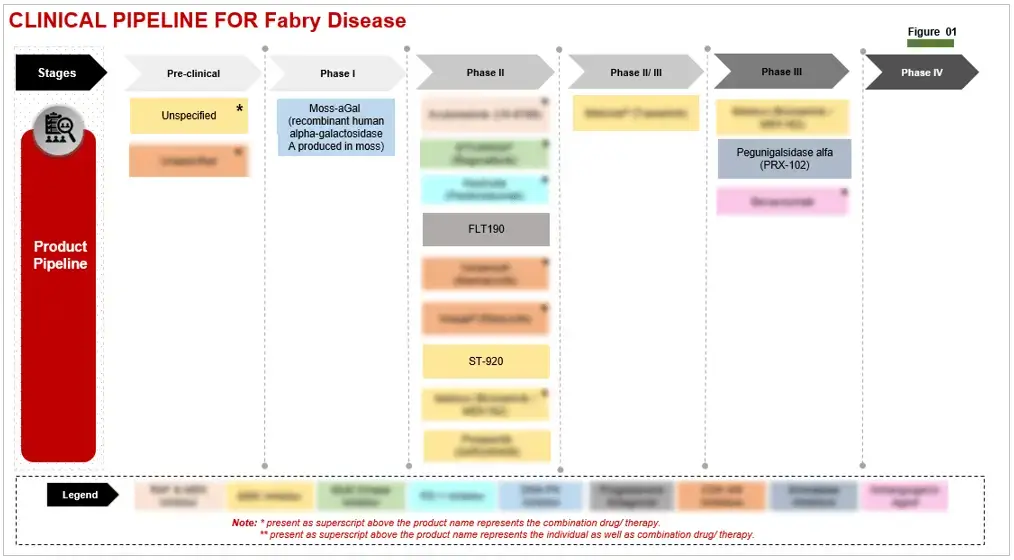
Figure 2: Development Pipeline for FD
Insights into the financial standing, product portfolios, and recent innovations of key stakeholders driving advancements in Fabry Disease solutions offer valuable perspectives on the landscape of treatment development for the condition.

Figure 3: Detailed Company Profile
This report delves into patents associated with Fabry Disease, highlighting notable innovations and identifying areas for enhancement or collaboration within the field.
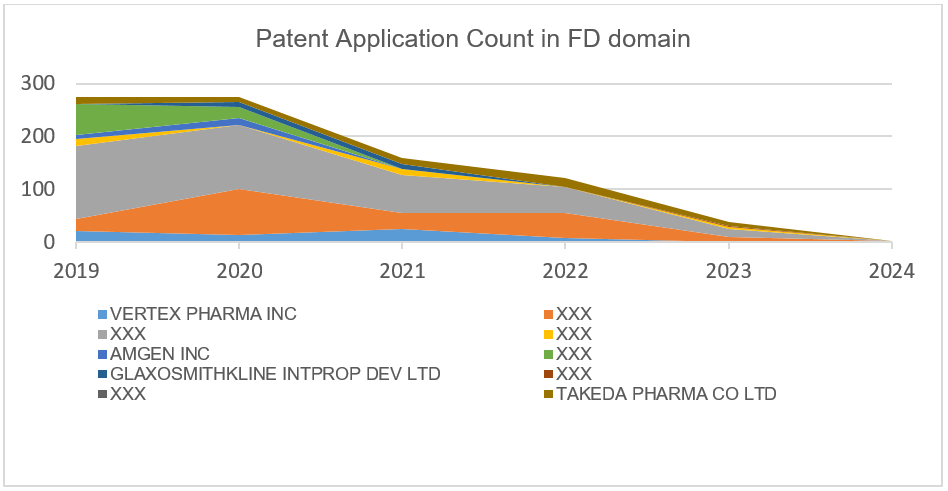
Figure 4: Patent application count
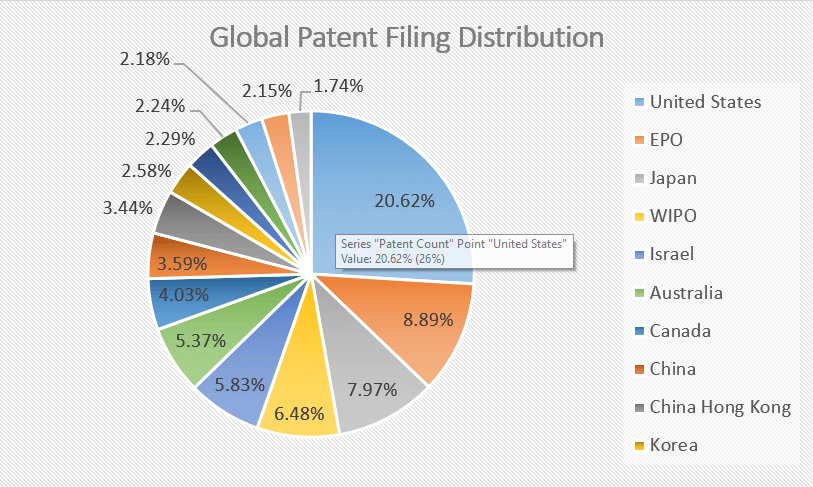
Figure 5: Global Patent filings
This report on Fabry Disease anticipates upcoming advancements, outlines pathways for expansion, and provides essential insights into market dynamics, including scale, revenue forecasts, and growth opportunities.
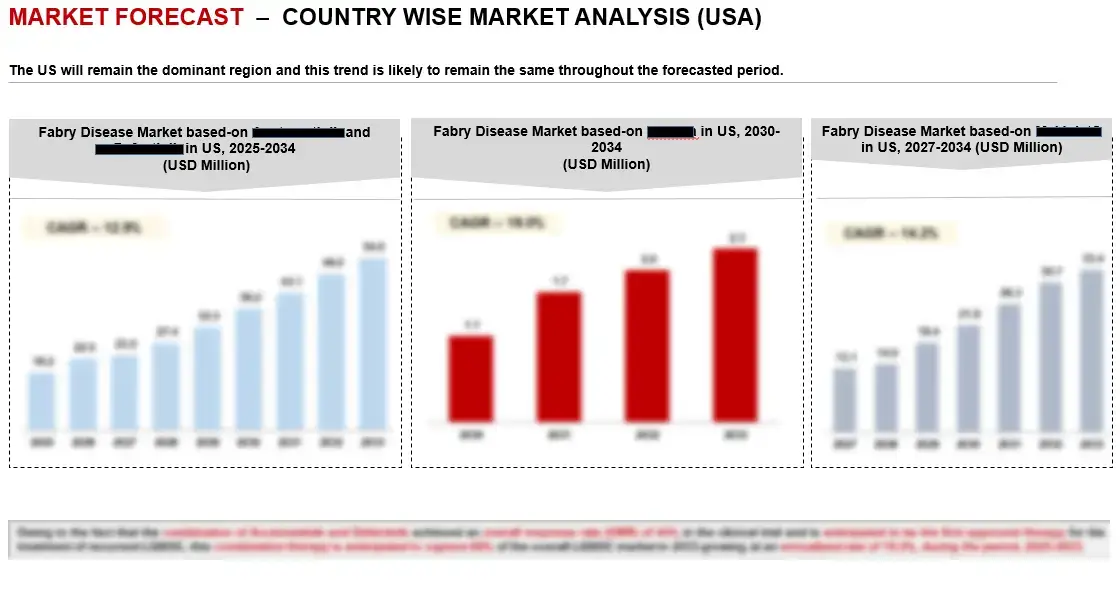
Figure 6: Country wise Forecasting
The competitive landscape section provides a comprehensive overview of key market players, their market shares, and concise profiles detailing strengths, weaknesses, and strategic approaches within the Fabry Disease domain. Additionally, it includes competitive benchmarking services to offer valuable insights into comparative performance and industry standards.
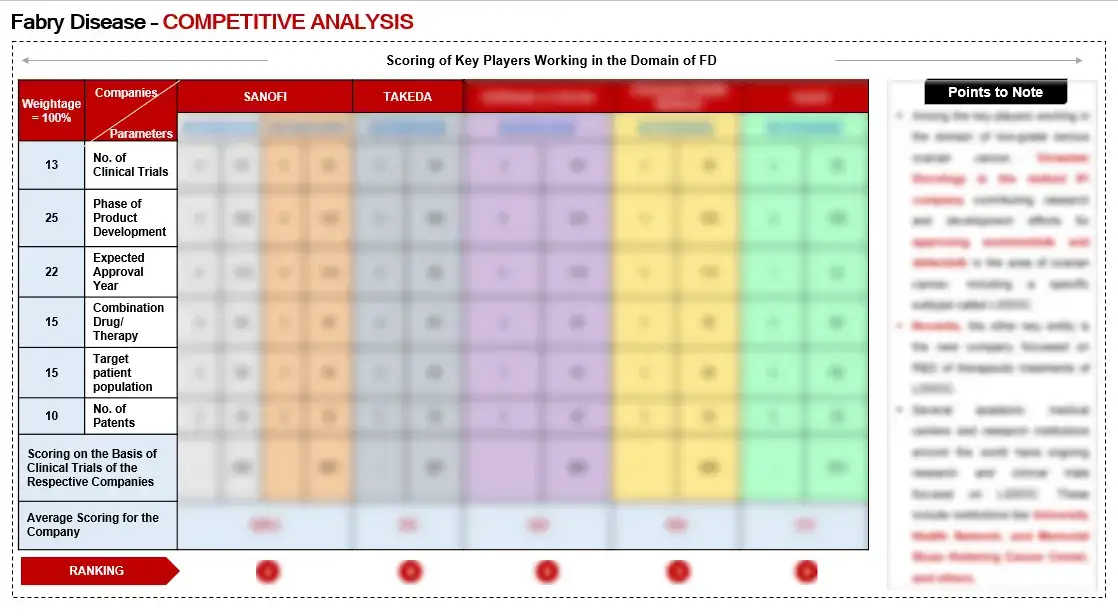
Figure 7: Competitive Scoring
In order to give the most precise estimations and forecasts, Wissen Research uses an extensive and iterative research approach that is focused on reducing deviation. The company blends top-down and bottom-up methodologies for market segmentation and quantitative estimation. In addition, data triangulation, which examines the market from three separate angles, is a recurrent topic present in all of our research studies. Important components of the approach used for all of our studies include the following:
On a wide scale, unprocessed market data is collected. Continuous data filtering makes sure that only verified and authenticated sources are taken into account. Additionally, data is extracted from a wide range of reports in our repository and from a number of reputable premium databases. We gather information from raw material suppliers, distributors, and purchasers to help with this since understanding the entire value chain is crucial for a thorough understanding of the market.
Surveys, technical symposia, and trade magazines are used to gather information on technical concerns and trends. Technical information focusing on white space and freedom of movement is also obtained from an intellectual property standpoint. Additionally, information on the industry’s drivers, constraints, and pricing patterns is obtained. As a result, a variety of original data are included in the material that is then cross-validated and certified with published sources.
We use simulation models to generate our market projections and estimates. Every study receives a special model that is tailored to it. Data for market dynamics, the technology environment, application development, and pricing patterns are gathered and supplied into the model all at once for analysis. The relative relevance of these factors is investigated, and their impact on the forecast period is assessed, using correlation, regression, and time series analysis. The process of market forecasting combines technological analysis with economic strategies, practical business acumen, and subject expertise.
Econometric models are frequently used for short-term forecasting, but technology market models are typically employed for long-term forecasting. These are based on a confluence of the business environment, regulatory environment, economic projection, and technical landscape. In order to develop global estimates, it is preferable to estimate markets from the bottom up by integrating data from key regional markets. This is required to ensure accuracy and a complete comprehension of the subject. Among the variables taken into account for forecasting are:
Regulations and anticipated developments
We give these criteria weights and use weighted average analysis to assess their market influence in order to calculate the anticipated market growth rate.
Primary research | Secondary research |
· Manufacturers · Technology distributors and wholesalers · End-user surveys · Consumer surveys | · Company reports and publications · Government publications · Independent investigations · Economic and demographic data · Online searches · Research reviews · Reference customers |
1.1 Overview of Fabry Disease
1.1.1 Definition and Classification of Fabry Disease
1.1.2 Scope and Applications of Fabry Disease Research
1.1.3 Benefits and Current State of Fabry Disease Therapies
1.2 Key Findings
1.3 Market Insights and Highlights
1.4 Research Background
1.5 Scope and Methodology
2. Technological Landscape of Fabry Disease
2.1 Types of Fabry Disease
2.1.1 Classification by Classic type
2.1.2 Classification by Late-onset/Atypical type
2.2 Genetic Composition and Characteristics
2.3 Emerging Technologies in Fabry Disease Research
3. Market Dynamics
3.1 Market Drivers and Challenges
3.2 Regulatory Landscape in Fabry Disease Research
4. Patent Analysis
4.1 Top Assignees in Fabry Disease Technology
4.2 Geography Focus of Top Assignees
4.3 Legal Status of Fabry Disease Patents
4.4 Assignee Segmentation
4.5 Network Analysis of Top Collaborating Entities in Fabry Disease Patent Applications
4.6 Technology Evolution in Fabry Disease
4.7 Key Patents in Fabry Disease
4.8 Patent Trends and Innovations
4.9 Key Players and Patent Portfolio Analysis
5. Clinical Trial Analysis
5.1 Overview of Fabry Disease Clinical Trials
5.2 Analysis by Trial Registration Year
5.3 Analysis by Phase of Development
5.4 Analysis by Number of Patients Enrolled
5.5 Analysis by Status of Trial
5.6 Analysis by Study Design
5.7 Analysis by Intervention Type
5.8 Analysis by Geography
5.9 Analysis by Key Sponsors/Collaborators
6. Market Forecast (2024-2034)
6.1 Methodology
6.2 Assumptions
6.3 Projected Growth of Fabry Disease Market (2024-2034)
6.3.1 Global Fabry Disease Market (2024-2034)
6.3.1.1 By Treatment
6.3.1.1.1 Enzyme Replacement therapy
6.3.1.1.2 Oral Chaperone Therapy
6.3.1.1.3 Others
6.3.1.2 By Route of Administration
6.3.1.2.1 Oral
6.3.1.2.2 Intravenous
6.3.2 Market Value Forecast in North America, Europe, and Asia Pacific (2024-2034)
6.3.2.1 By Treatment
6.3.2.1.1 Enzyme Replacement therapy
6.3.2.1.2 Oral Chaperone Therapy
6.3.12.1.3 Others
6.3.2.2 By Route of Administration
6.3.2.2.1 Oral
6.3.2.2.2 Intravenous
7. Competitive Landscape
7.1 Benchmarking Parameters
7.2 Scoring of Different Companies
7.3 Top Company Profiles
7.3.1 Sanofi
7.3.2 Takeda
7.3.3 Amicus
7.3.4 Protalix Biotherapeutics
7.3.5 Freeline Therapeutics
7.3.6 Idorsia Therapeutics
7.3.7 Company 7
7.3.8 Company 8
7.3.9 Company 9
7.4 Product Portfolio Analysis
7.5 Recent Developments and Strategies
8. Future Outlook and Market Opportunities
8.1 Technological Advancements in Fabry Disease Research
8.2 Unmet Needs and Potential Market Gaps
9. Conclusion
10. Appendix
10.1 Glossary of Terms
10.2 List of Abbreviations1.3 1.4 1.6
S.no | Key Highlights of Report | |
1. | Patent Analysis | · Top Assignee · Geography focus of top Assignees · Assignee Segmentation · Technology Evolution · Key Patents · Application and Issued Trend · Key technology |
2. | Market Analysis | · Current Treatment Options · Emerging Therapies and Research Developments (by product analysis and scientific analysis) · Strategic activities · Therapeutic activity of drugs · Company portfolio · Detailed profiles of the key players that are engaged in the development of approved drugs |
3. | Clinical Trials | · Analysis of clinical trial through graphical representation · Coverage of treatments from pre-clinical phases till commercialization (also including terminated and completed studies) |
4. | Forecast | · Detailed comprehension of the historic, current and forecasted trend of market by analysis of impact of these treatments on the market |
5. | Opportunity Analysis | · Technology evolution based on problem solution · Potential licensees · Geography of suppliers · Treatment trends · Unmet needs · SWOT · Drivers and barriers |
6. | KOLs | · A detailed analysis and identification of the Key Opinion Leaders (KOLs), shortlisted based on their contributions |
LIST OF FIGURES
Figure number | Description |
Figure 1 | Terminology of Fabry Disease Over The Years |
Figure 2 | Fabry Disease– History and Present |
Figure 3 | Projection of Fabry Disease till 2034 in different geographies |
Figure 4 | Technology Categorization For Fabry Disease therapies |
Figure 5 | Recent Technology Trends in Fabry Disease therapies |
Figure 6 | Technology Evolution in Fabry Disease therapies |
Figure 7 | Geographical Distribution of Patents of Top Assignees |
Figure 8 | Assignee Segmentation (Companies) |
Figure 9 | Assignee Segmentation (Educational Establishment) |
Figure 10 | Patent Based Key Insights Of xx |
Figure 11 | Patent Based Key insights of xx |
Figure 12 | Patent Based Key insights of xx |
Figure 13 | Geographic Distribution of the Universities/Research Organizations Filling Patents On Various Technology advancements |
Figure 14 | Key Summary Regarding the Patent Filing On Fabry Disease |
Figure 15 | Product Pipeline of Different therapeutic approaches with Companies Name |
Figure 16 | Portfolio for Government Approved Hepatic medications |
Figure 17 | Key Growth Drivers for Fabry Disease Market |
Figure 18 | Restraints for Fabry Disease Market |
Figure 19 | xx Portfolio (Top Player) |
Figure 20 | xx Portfolio (Top Player) |
Figure 21 | xx Portfolio (Top Player) |
Figure 23 | xx Portfolio (Top Player) |
Figure 24 | xx Portfolio (Top Player) |
Figure 25 | xx Portfolio (Start-up) |
Figure 26 | xx Portfolio (Start-up) |
Figure 27 | xx Portfolio (Start-up) |
Figure 28 | Strategic Activities Including Collaboration, Partnerships and Acquisitions |
Figure 29 | Research Methodology for Patent, Selection and Analysis |
LIST OF GRAPHS
Graph number |
Description |
Graph 1 | Problem Solution Analysis |
Graph 2 | Top Assignees in Fabry Disease treatment therapy |
Graph 3 | Technology Focus of Top Assignees (IPC-CPC Classes) |
Graph 4 | Top Countries of Origin of Patents |
Graph 5 | New entrants in FD field |
Graph 7 | Legal Status |
Graph 8 | Most Cited Patents |
Graph 9 | Patents with Largest Invention Families |
Graph 10 | Most Claim-Heavy Patents |
Graph 11 | Filing Trends |
Graph 12 | Weighted Scores for Top xx Players According to Benchmarking Criteria |
Graph 13 | Fabry Disease (CAGR: 2024-2034) |
Graph 14 | Fabry Disease Market Share: Distribution by Key Geographical Area, 2024-2034 |
LIST OF TABLES
Table number | Description |
Table 1 | Parameters included and excluded for conducting the analysis |
Table 2 | Technology Classes with Definitions |
Table 3 | Patent Litigation |
Table 4 | Highest Market Valued Patents |
Table 5 | SWOT Analysis of Top 3 Players |
Table 6 | Parameters and their score for Benchmarking |
Table 7 | Weighted scores for top 5 players according to benchmarking criteria |
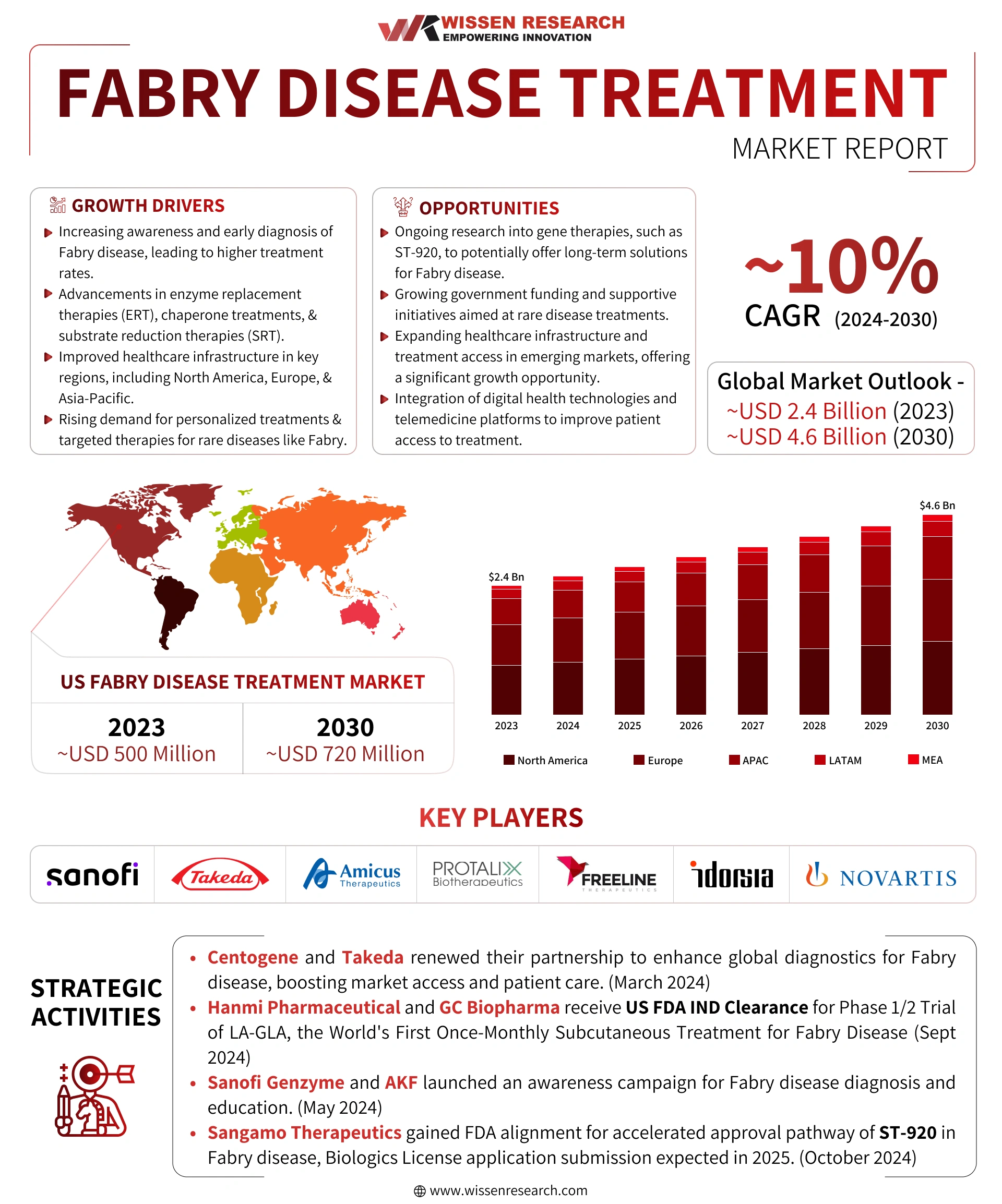
© Copyright 2024 – Wissen Research All Rights Reserved.